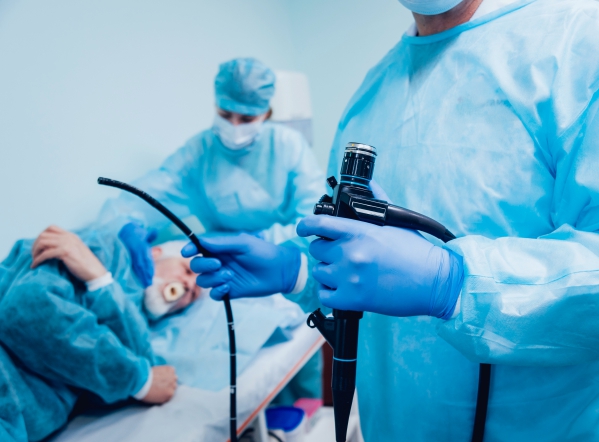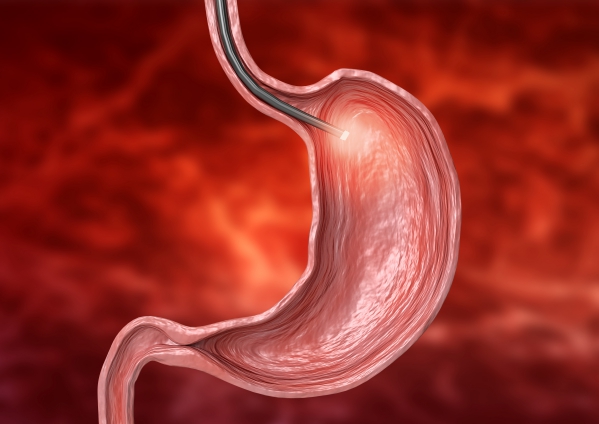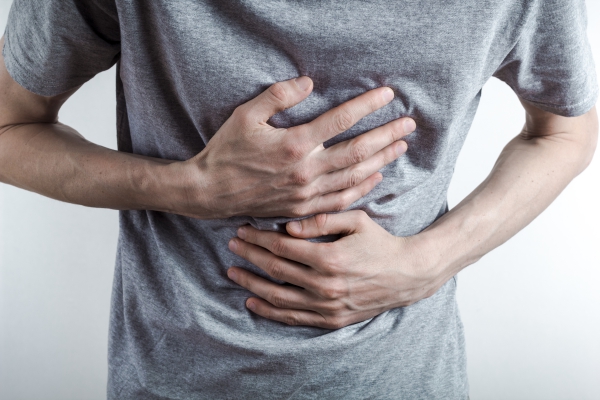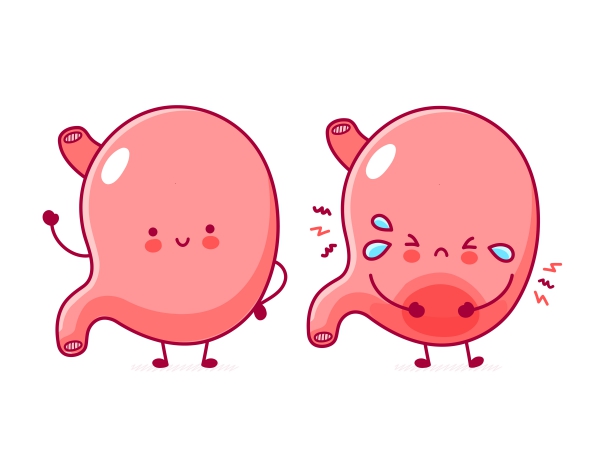What is Barrett’s esophagus?
The esophagus is the pipe-like connection that links your mouth to your stomach. When food is ingested, it travels down the esophagus till it reaches the stomach. The lumen of the esophagus is lined by a specific type of layer of cells (known as the epithelium). In Barrett’s esophagus, this healthy epithelium is replaced by abnormal cells. It most commonly arises due to a prolonged exposure of stomach acid occurring in gastroesophageal reflux disease (GERD). This condition involves chronic regurgitation of stomach contents as well as acid, and this contributes in the development of Barrett’s esophagus as the acid damages the lumen of the esophagus.
Barrett’s esophagus most commonly arises between 55-65 years of age. It is more common among men compared to women, and is also more likely to affect white males. It is also predominant among people who smoke cigarette, consume alcohol and are obese. It is estimated that Barrett’s esophagus affects around 0.9-10% of the general adult population. Barrett’s esophagus is also known to be closely related to the development of esophageal cancer.
What are the causes of Barrett’s esophagus?
The exact cause of Barrett’s esophagus is not well known. However, as mentioned earlier, Barrett’s esophagus is a well-known complication of gastroesophageal reflux disease. The region where the esophagus meets the stomach is known as the lower esophageal sphincter. With time, this sphincter may start to fail, leading to chronic reflux of acid from the stomach into the esophagus. The chemicals and acid found in the stomach contents damage the lining of the esophagus. The cells present in the esophagus begin to change and are replaced by abnormal cells. Studies have shown that being obese also contributes in the development of the disease.

What are the risk factors of Barrett’s esophagus?
The following factors may increase your risk of having Barrett’s esophagus:
- Being overweight
- Being aged above 50 years
- Being a male is associated with a higher risk compared to females
- Having close family members with the same condition
- Being white makes you more likely to have the condition compared to people from other races
- Having chronic heartburn or gastroesophageal reflux disease
- Being a smoker
What are the signs and symptoms of Barrett’s esophagus?
Barrett’s esophagus is usually present in a person with a longstanding history of gastroesophageal reflux disease. The signs and symptoms that may be present in Barrett’s esophagus include:
- Frequent heartburn
- Regurgitation of stomach contents
- Burning sensation in the chest
- Difficulty to swallow food (rare)

How is the diagnosis of Barrett’s esophagus made?
To make the diagnosis of Barrett’s esophagus, your doctor will first start by asking you a series of questions to know more about your symptoms as well as how the disease is progressing. He/she will then proceed with a physical examination to look for signs of Barrett’s esophagus. In some cases, your doctor may request further tests to confirm the diagnosis. These tests include:

- Esophagogastroduodenoscopy: Often abbreviated as EGD, this procedure allows visualisation of the esophagus and stomach. In this procedure, a special device with a camera on its end is inserted through your mouth into your esophagus and stomach. Your doctor will then be able to see any changes in the lining of your esophagus. This procedure also allows taking a sample of tissue from the esophagus for further analysis. This is known as a biopsy.
- Examination under a microscope: Once samples of the esophagus have been obtained through the EGD, they can be sent to the laboratory to be examined under a microscope. This allows the identification of specific findings that correlate with Barrett’s esophagus. It also allows grading of the severity of the condition as well as identification of cancerous changes. It is then classified into three categories: No dysplasia, Low-grade dysplasia and High-grade dysplasia.
The American College of Gastroenterology recommends that some people need to be screened for the presence of Barrett’s esophagus. These include males who frequently have gastroesophageal reflux disease symptoms which is not responding to medications and who also have at least 2 of the following risk factors:
- Being white
- Being aged above 50 years
- Currently smoking or having smoked in the past
- Being overweight
- Having close family member with a history of Barrett’s esophagus or esophageal cancer
How is Barrett’s esophagus managed?

In order to know which treatment option is more appropriate for you, your doctor first has to grade the extent of the disease. Treatment options include:
- Watch and wait: In cases where no dysplasia (cancerous changes) is found, your doctor may recommend that you have endoscopy at specific time intervals (every 1-5 years) to monitor if there are any changes occurring with time.
- Treat as gastroesophageal reflux disease: Medications such as proton pump inhibitors as well as lifestyle changes (see later) can help to alleviate your symptoms if no dysplasia has been found on microscopic examination of your esophageal cells. Some procedures may also be done to strengthen your lower esophageal sphincter to prevent reflux of acid into your esophagus.
- Lifestyle modifications: If you have gastroesophageal reflux disease or Barrett’s esophagus it is recommended that you avoid fatty or fried foods, chocolate, peppermint, alcohol, coffee, carbonated beverages, citrus fruits, tomato sauce, ketchup, mustard, vinegar, aspirin and other nonsteroidal anti-inflammatory drugs. It is also advised to avoid eating 3 hours before going to bed, decrease the size of meal portions, elevate the head of the bed by 6 inches, lose weight if you are overweight or obese and to stop smoking if you do. These lifestyle modifications can help in both alleviating bothersome symptoms as well as slowing/stopping the progression of the disease.
- Removal of damaged cells in the esophagus: If low-grade dysplasia is identified (early stage of cancer development), the preferred treatment choice is to remove or kill the damaged cells that can potentially lead to cancer. Methods used include endoscopic resection (removing damaged cells using an endoscope), radiofrequency ablation (use of heat to remove abnormal cells) and cryotherapy (use of cold liquid or gas to kill abnormal cells).
- Surgical removal of damaged part of the esophagus: In cases of high-grade dysplasia, surgery may have to be done to remove the damaged part (usually the lower portion) of the esophagus. The remaining healthy part of the esophagus is then attached to your stomach.

What is the prognosis of Barrett’s esophagus?
The most significant consequence of Barrett’s esophagus is the development of esophageal cancer. However, the majority of people with the condition do not end up with the cancer. The incidence of esophageal cancer has been increasing during the last years.

Source:
Thrift AP. Determination of risk for Barrett's esophagus and esophageal adenocarcinoma. Curr Opin Gastroenterol. 2016 Jul. 32(4):319-24.
Ronkainen J, Aro P, Storskrubb T, et al. Prevalence of Barrett's esophagus in the general population: an endoscopic study. Gastroenterology. 2005 Dec. 129(6):1825-31.
Haag S, Nandurkar S, Talley NJ. Regression of Barrett's esophagus: the role of acid suppression, surgery, and ablative methods. Gastrointest Endosc. 1999 Aug. 50(2):229-40.
Barrett NR. Chronic peptic ulcer of the oesophagus and 'oesophagitis'. Br J Surg. 1950 Oct. 38(150):175-82.
Johnston, M., 2017. Barrett Esophagus



